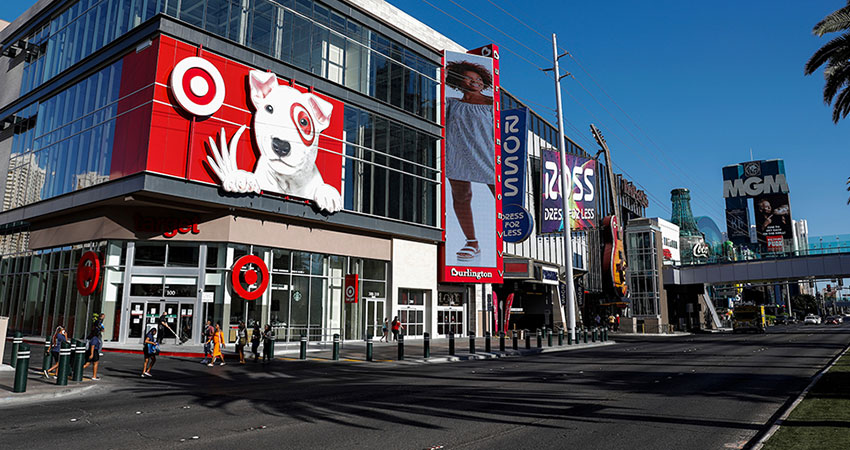Target brought bad news Wednesday, with a third quarter earnings miss plus a warning about softer performance in Q4, as families make tough budget calls on essentials vs. nonessentials heading into the holidays while high inflation lingers, registering a 7.7% rate in October.
As Walmart and others have reported, Target saw sales in discretionary categories like apparel, electronics and home goods dip as prices of food and fuel have soared. Given current conditions and softness in spending, the company is calling for a low single-digit decline in Q4 comparable sales, and an operating margin of 3%.
“With high rates of inflation continuing to erode their purchasing power, many consumers this year have relied on borrowing or dipping into their savings to manage their weekly budgets,” said Target chairman and CEO Brian Cornell on the analyst call. “But for many consumers, those options are starting to run out.”
Cornell said Target is conducting a “top to bottom” review of operations, aiming to cut $2 billion to $3 billion in expenses over the next three years.
Earnings per share were $1.54 for Q3, a good deal lower than the $2.13 analyst consensus figure from Refinitiv. Net income was $712 million, about half of the $1.49 billion figure from last year. Target’s revenue came in at $26.52 billion vs. the consensus of $26.38 billion.
Comparable sales in ecommerce for Target were up just 0.3% in Q3, compared to a 30% gain last year, while store comps grew 3.2%, off of 10% in 2021. Target recorded a 1.4% increase in foot traffic in Q3, down from 12.9% growth a year ago, and the average ticket size grew 1.3%.
At the quarter close on Oct. 31, Target was carrying $17.1 billion worth of inventory on its books, $5.17 billion higher than the pre-pandemic year of 2019. About one-third of that figure or $1.8 billion was tied to excess inventory either ordered as a hedge against supply chain shocks or that arrived early as shipping times eased recently.
Michael Fiddelke, EVP and CIO of Target, said the gross margin rate of 24.7% for Q3 fell below expectations due to the high level of promotions to bring in price-sensitive shoppers, increased theft to the tune of $400 million — much of it organized — and greater inventory costs. Cornell said Target is investing in training and technology to counter rising theft.
“While we anticipated a highly promotional environment this fall, given the excess inventory we’ve been seeing across retail, this enhanced focus on promotions reflects an increasing level of stress on consumers, as they navigate through multiple headwinds, including persistent inflation and rapidly rising interest rates,” Fiddelke said.
John Mulligan, EVP and COO of Target, said the company added five automated sortation centers this year, with more coming in 2023; the initial one was built in Minneapolis in 2020. They are designed to help Target optimize its ship-from-store operations, typically the omnichannel tactic with the greatest margin hit.
“These centers, which are typically a little bigger than a single store, increase our speed and meaningfully reduce our last-mile delivery costs in the markets where they operate,” Mulligan said. “They also create back-room fulfillment capacity in the stores they serve, as they eliminate the need for each individual store to sort the boxes they’ve packed for delivery.”

